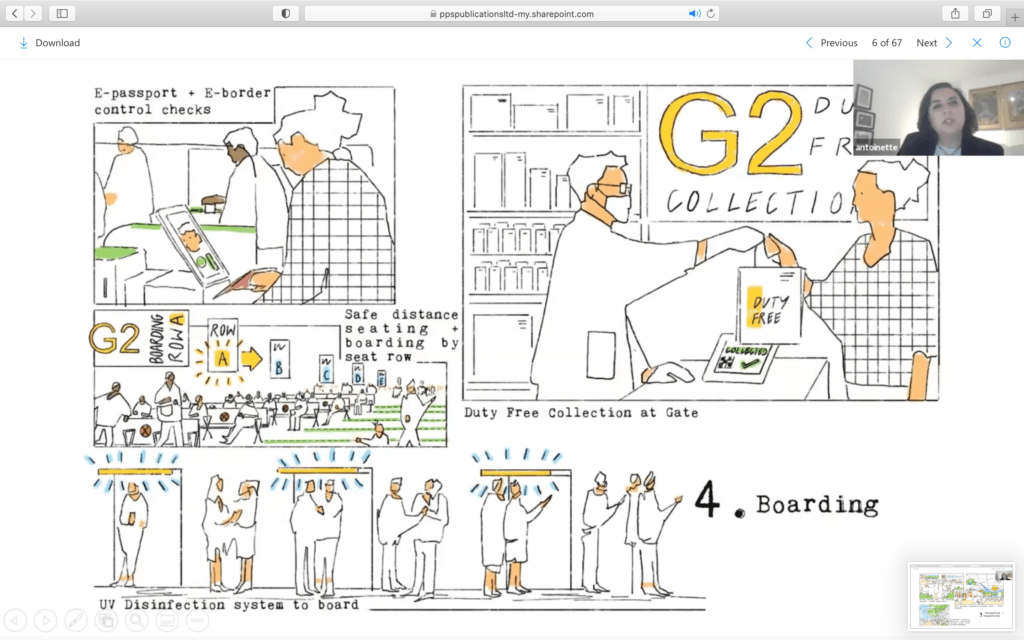Changing Spaces: Challenges for Airport Terminal Design
Share

An architect, a technology supplier and leaders from Adelaide Airport and Spirit Airlines come together at Virtual Expo to weigh in on the obstacles the industry needs to overcome so that passenger well-being post-COVID-19 doesn’t get held up in the terminal. This article originally appeared in Expo Daily Experience. Read the full issues and register for FTE APEX Virtual Expo — the platform will remain open as a resource until January 8.
As the aviation industry works to ensure passenger safety amid the COVID-19 pandemic, it faces many of the same impediments it did post 9/11 when it was tasked with beefing up security: an overall lack of harmonization.
“The security process has improved, but realistically, we’re still funneling everybody through the same choke points and then allowing them into the sterile area,” says David Blackwell, executive general manager, Technology and Innovation at Adelaide Airport. There’s no universal infrastructure to speed up passenger processing, which still leads to crowds today, he adds.
“Queuing is bad for COVID — you cannot maintain social distancing. Being able to do these processes off-airport will significantly help,” adds Chris Forrest, vice-president, Airports and Unmanned Aerial Systems at Collins Aerospace.
“The regulatory regime very much dictates or throttles your innovation.”
Mike Byrom, Spirit Airlines
Antoinette Nassopoulos-Erickson, senior partner, at Foster + Partners architects, agrees. While more checkpoints for testing might be necessary, there still needs to be room for healthy passenger flow, with features like air purification systems, new seating layouts, better lighting and even open spaces in the sterile area of the airport.
“We want to make sure that people can navigate [the airport] the way they want to navigate it, but also feel safe and secure,” says Nassopoulos-Erickson.
Prior to the outbreak of the pandemic, IATA and Airports Council International proposed an initiative to introduce technologies that would streamline air travel, move check-in and baggage drop off-site and reduce crowds at security. The NEXXT initiative is ongoing, but many airports and airlines still have major investments to make in this regard. New partnerships also need to be forged with off-airport check-in service locations and governments have to agree to standards for biometric data exchange before the ultimate goal can be met.
Of course, the challenge comes back to universal adoption and international cross-border acceptance. Mike Byrom, vice-president, Airport Services, Spirit Airlines, says it best: “The regulatory regime very much dictates or throttles your innovation.”
Virtual Expo Connection – Event Agenda
Find “What will the next generation of airport facilities look like post- COVID-19, and what technologies will they utilise?” in the event environment until January 8, 2021.


